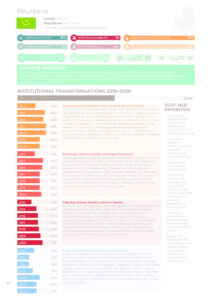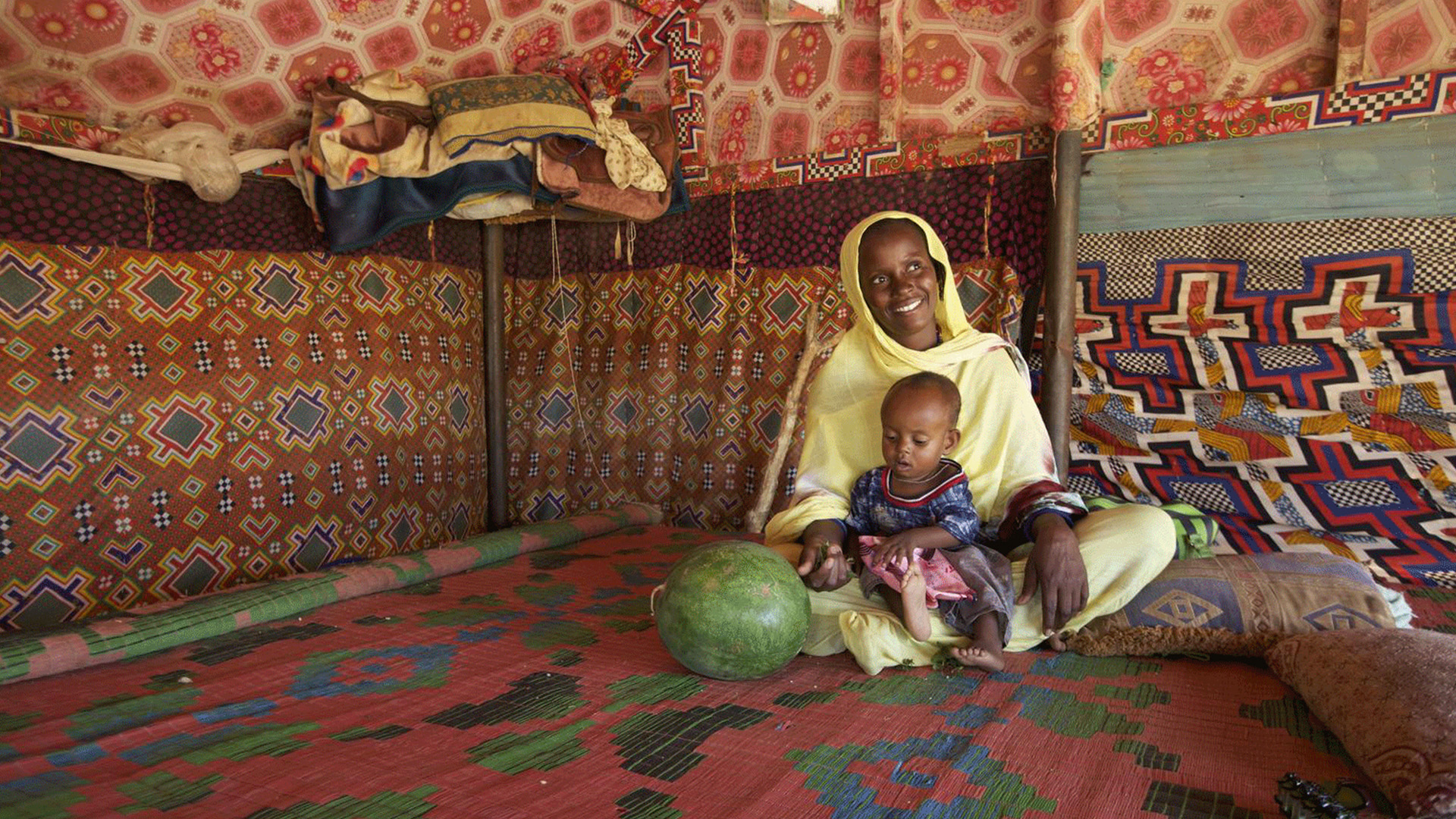Nutrition situation
Under five stunting (%)
22.8
Under five overweight (%)
1.5
Anaemia in women 15-49 years (%)
37.2
Under five wasting (%)
11.5
Low birth weight (%)
n.a.
0 to 5-month-old exclusive breastfeeding (%)
40.3
Adolescent overweight (%)
Male: 8.4
/ Female: 16.9
Adult overweight (%)
Male: 26
/ Female: 42.4
Adult obesity (%)
Male: 6.6
/ Female: 18.5
Adult diabetes (%)
Male: 8.5
/ Female: 9.4
COVID-19 snapshot
The country has been relatively unaffected by the COVID-19 pandemic, with 7,724 cases and 164 deaths. The Government adopted several measures that led to disruptions in the food system; these measures were later eased in May and lifted in September. It has been possible to significantly integrate nutrition into the second version of the national plan to address COVID-19.
Institutional transformations 2019-2020
Bringing people together into a shared space for action
The momentum generated by the new SUN government focal point has allowed the multisectoral platform meetings to regain regularity and consistency. All contributing state sectors have named focal points at the decision-making level within the platform. The number of operational regional committees for nutrition coordination has risen from five to eight. Challenges ahead: establishing donor networks, from academia and the private sector – United Nations network is being revitalised. A cell for nutrition coordination has been created in the Ministry for the Economy.Ensuring a coherent policy and legal framework
The decree establishing the National Nutrition Development Council has been amended to make it more functional and the signature process is in its final phase. There is already a legal and political arsenal (the Code of Marketing of Breastmilk Substitutes, with validation of its regulations in 2020, the salt iodisation requirement for human and animal foods, the fortification of wheat flours), but its application remains problematic, especially as a mechanism for reporting violations is not yet in place. Advocacy, outreach and awareness-raising should therefore continue.Aligning actions around common results
There are tools for aligned programming, thanks to the multisectoral strategic nutrition plan 2016–2025, which integrated a Common Results Framework. The challenge lies in annual planning to optimise interventions that support nutrition in the various sectors. Priority actions for 2019–2020: 1) create a list of existing and potential interventions; 2) refine the multisectoral planning and implementation of interventions; 3) put in place a framework for the monitoring and evaluation of interventions by sector to target outcomes of the Common Results Framework.Financial tracking and resource mobilisation
Progress translates into the estimation of needs over the next 10 years to support specific nutrition interventions and determine disparities based on an analysis of the amount allocated to support nutrition in the annual State budgets. Despite the efforts of the State and its technical and financial partners, the bulk of the funding is allocated to short-term interventions linked to emergency response plans. Preventative nutritional interventions remain underfunded, and the long-term mobilisation of resources continues to be a major challenge ahead.2020-2021 Priorities
- Update and budget for the multisectoral strategic plan and its Common Results Framework.
- Strengthen platform operationalisation and refine planning and implementation.
- Map existing and potential interventions.
- Strengthen advocacy for a budget line allocated to nutrition in the State budget and for increased funding of preventative interventions.
- Establish a monitoring and evaluation framework for interventions by sector.
- Ensure the application of a memorandum of understanding on iodisation of salt and the fortification of wheat flours.
Download

